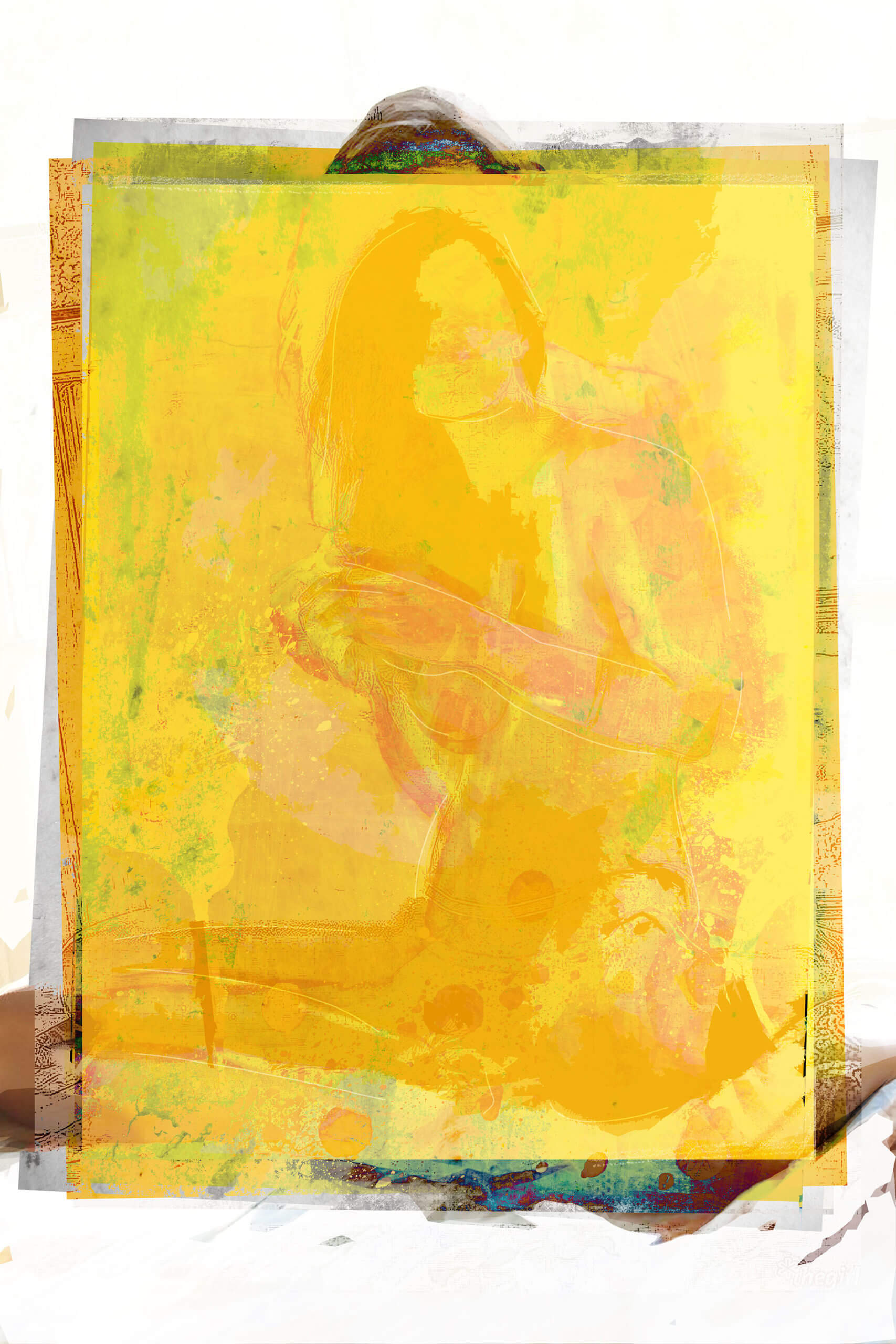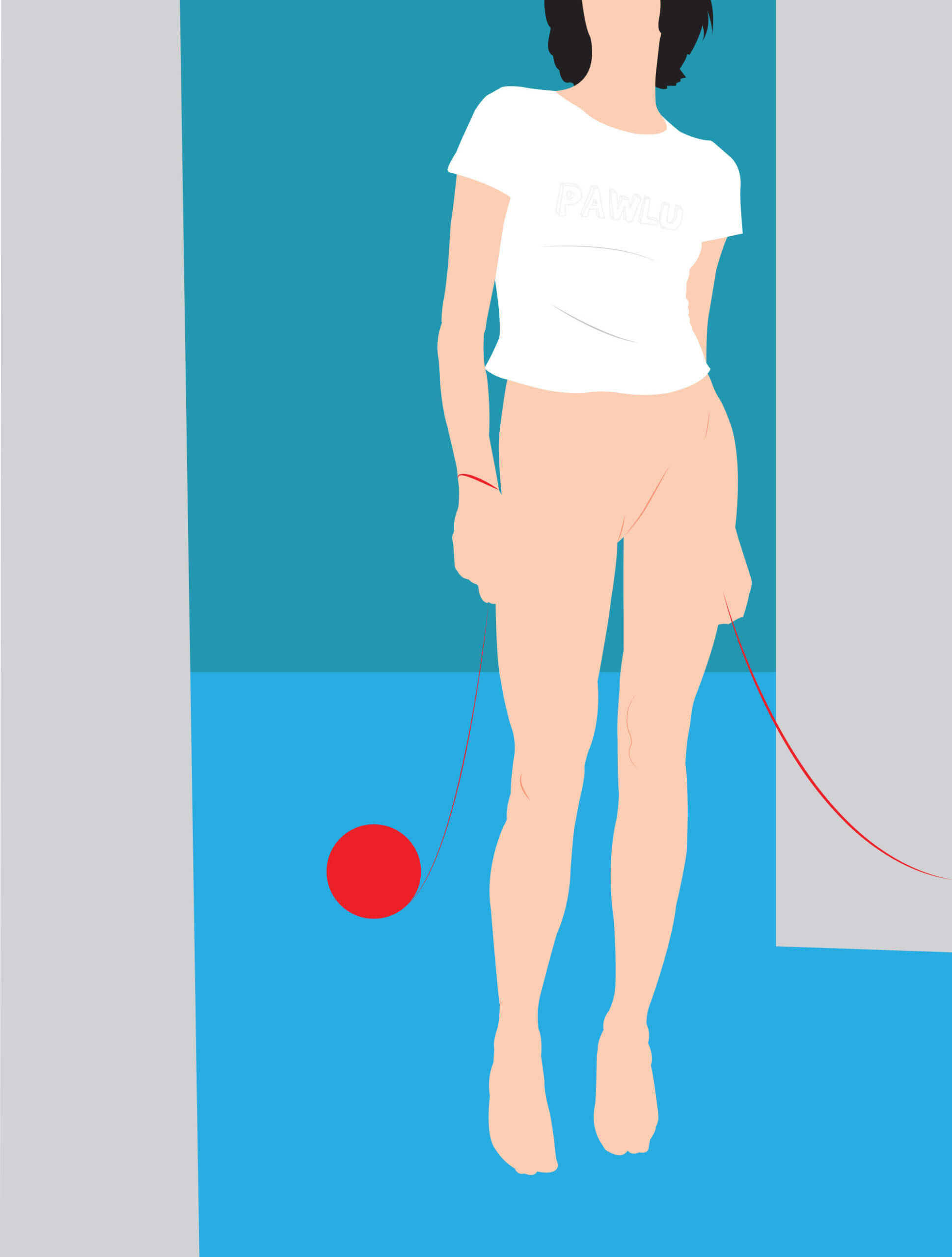
Introduction
Kobba is the Maltese word for a clew, a ball of yarn or cord, in our case a ball of red thread that seems infinite but whose beginning and end never come together. The thread flows above the lower layer like a wave that washes on the shore and then retreats to make space for the next, in a never ending cycle. The clew is sown with scorching red stories. One layer above the next, the clew is the experiences and relations that shape us. A continuous red line that starts and finishes in a state of order or confusion, and that, once tangled, becomes impossible to restore.
The Project
A series of digital illustrations through which questions about human relations are revived; questions within ourselves but also outside of our personal realm. Questions that refer to intimacy, romanticism, apathy, bodily greed and human values. This work questions what is it that makes us whole, what we look for within us, and within those who relate to us. The human figure is central to this project, acting as a container, but also as a trigger. The woman, a metaphor for life in all its elements, becomes a model on whose body the red thread flows, slides and tangles to explore these dimensions in human relations.
The red string, flowing orderly or jumbled, is an indicator of direction or confusion. An indicator of journeys that lead us to a discovery of the self and a discovery of those who are close to us. The latter might not be visible, might not exist, might not want to be there or are mere audiences, just like you are.
Just like the red string, these illustrations toured Malta and Gozo in a series of public meetings during which those present were invited to share and discuss their own reactions to the theme. The tour stopped at the following venues starting September 2018 up to March 2019:
- Private viewing 07/09/18: L’Enoteca – Rabat
- 14/19/18: Little Red Door – Valletta
- 28/09/18: Hosted by Mario – Xagħra, Gozo
- 19/10/18: Il-Baxa Café – Rabat
- 02/11/18: Gleneagles Bar – Mġarr, Gozo
- 14/11/18: Tat-Taraġ – Rabat, Malta
- 08/12/18: Hosted by Family Borg Micallef – Lija
- 15/03/19: Hosted by Antoine Farrugia – Mqabba
The Media

The Catholic religion and its traditions still hold a strong influence over the majority of the Maltese population. On Maundy Thursday and Good Friday, large numbers of people flock to Valletta to witness, partake in, or simply be a part of the various rituals that unfold. During these days, individuals engage in prayers, visit themed exhibitions, and collect holy pictures, while a procession of participants dressed in Biblical costumes, accompanied by brass bands and individuals carrying statues representing different stages of Christ’s suffering, make their way through the crowds.
“Consumatum Est,” featured a digitally manipulated holy picture portraying the lifeless body of Christ affixed to a tower crane shaped like a crucifix. In recent years, tower cranes have become a ubiquitous presence in the Maltese landscape, viewed by protesters as symbols of destruction. The framed picture was prominently displayed in a window at a local grocery shop on Archbishop Street in Valletta. Unveiled on the morning of Thursday, April 18, 2019, it enticed passersby to pause and contemplate what initially appeared to be a conventional sacred image.
However, beyond the religious rituals and artistic interpretations, a deeper message resonates. The installation symbolically highlights the detrimental consequences of unchecked environmental exploitation, resource exhaustion, and land abuse. These issues have plagued the country for far too long, leaving both the nation and the quality of life metaphorically “nailed to death.”
Through the juxtaposition of religious symbolism and the towering presence of the cranes, “Consumatum Est” prompted viewers to reflect on the urgent need for responsible stewardship of our environment. It drew attention to the consequences of our actions, emphasizing that our unchecked consumption and disregard for sustainability have dire implications for our society.
–
Heartfelt gratitude goes to the Spanish sculptor, Juan Bautista, for generously permitting the reinterpretation of his sculpture for this purpose. A word of appreciation also goes to Sunny Psaila, who graciously offered his shop window as a space for the installation. Additionally, many thanks go to the talented photographer, Carl Farrugia, who skillfully captured the setup through his lenses, immortalizing it for posterity.
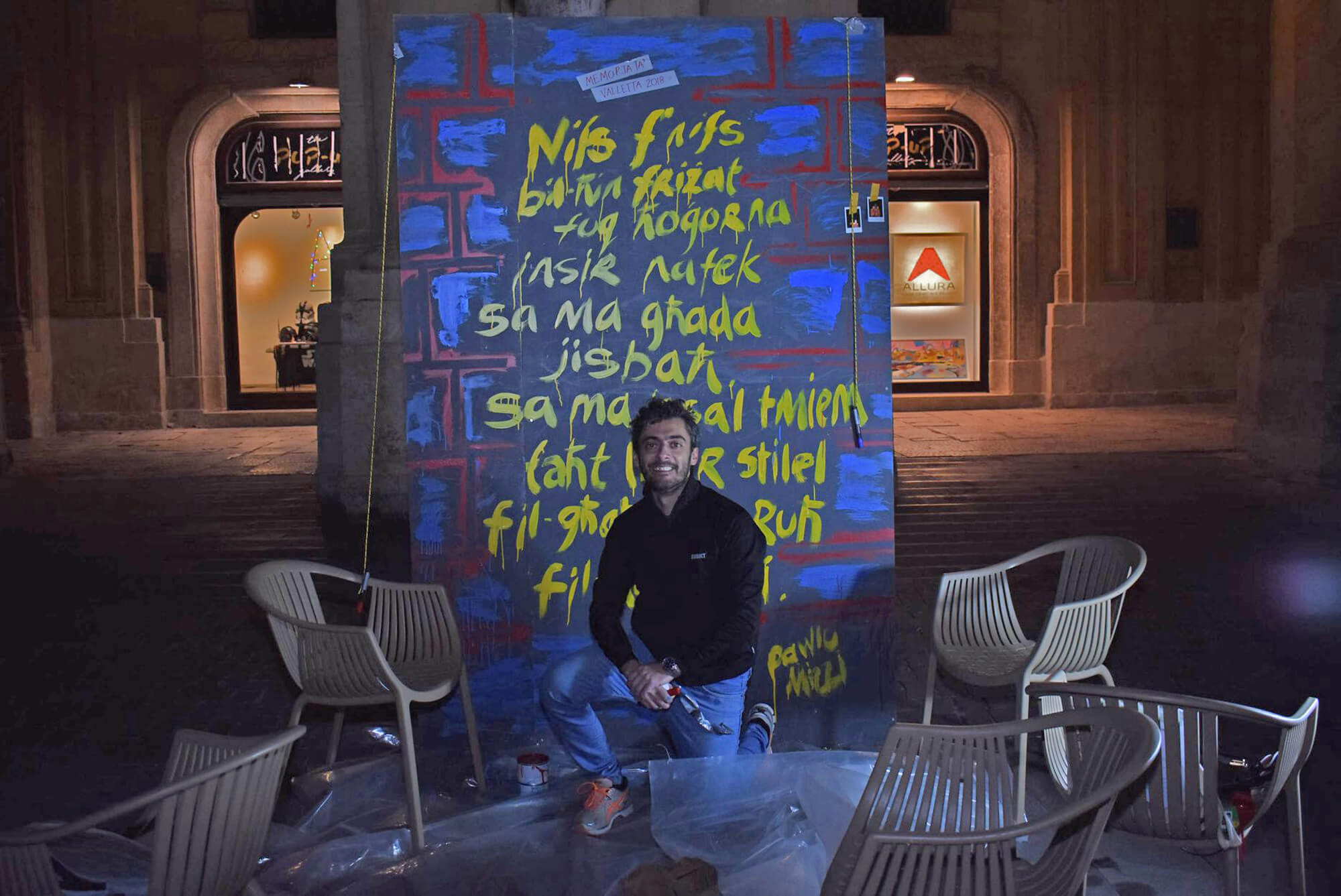
During the ‘L-Aħħar Festa’ festivities in Valletta on December 15, 2018, which marked the conclusion of Valletta’s tenure as the European Capital of Culture, a particular wall became a hub for interaction.
Despite the adverse weather conditions that plagued Valletta that day, individuals were encouraged to contribute to the artwork by leaving their own mark on the “wall.” This could be achieved through painting directly on it or by attaching their thoughts on sticky notes and sharing polaroid selfies. The aim was to cover the entire wall with photographs, symbolizing the city’s vibrant life, characterized by continuous human engagement and connections.
The poem, composed in the Maltese language, narrates an intimate moment experienced within the city. Although it explicitly refers to a physical encounter between two individuals, the poem metaphorically represents the artist’s deep affection for their hometown.
Nifs f’nifs
bil-ħin friżat fuq ħoġorna,
ngħixek,
insir nafek.
Sa ma għada jisbaħ.
Sa ma jasal tmiem.
Taħt liżar stilel,
fil-għatx tar-ruħ,
fil-Kapitali.
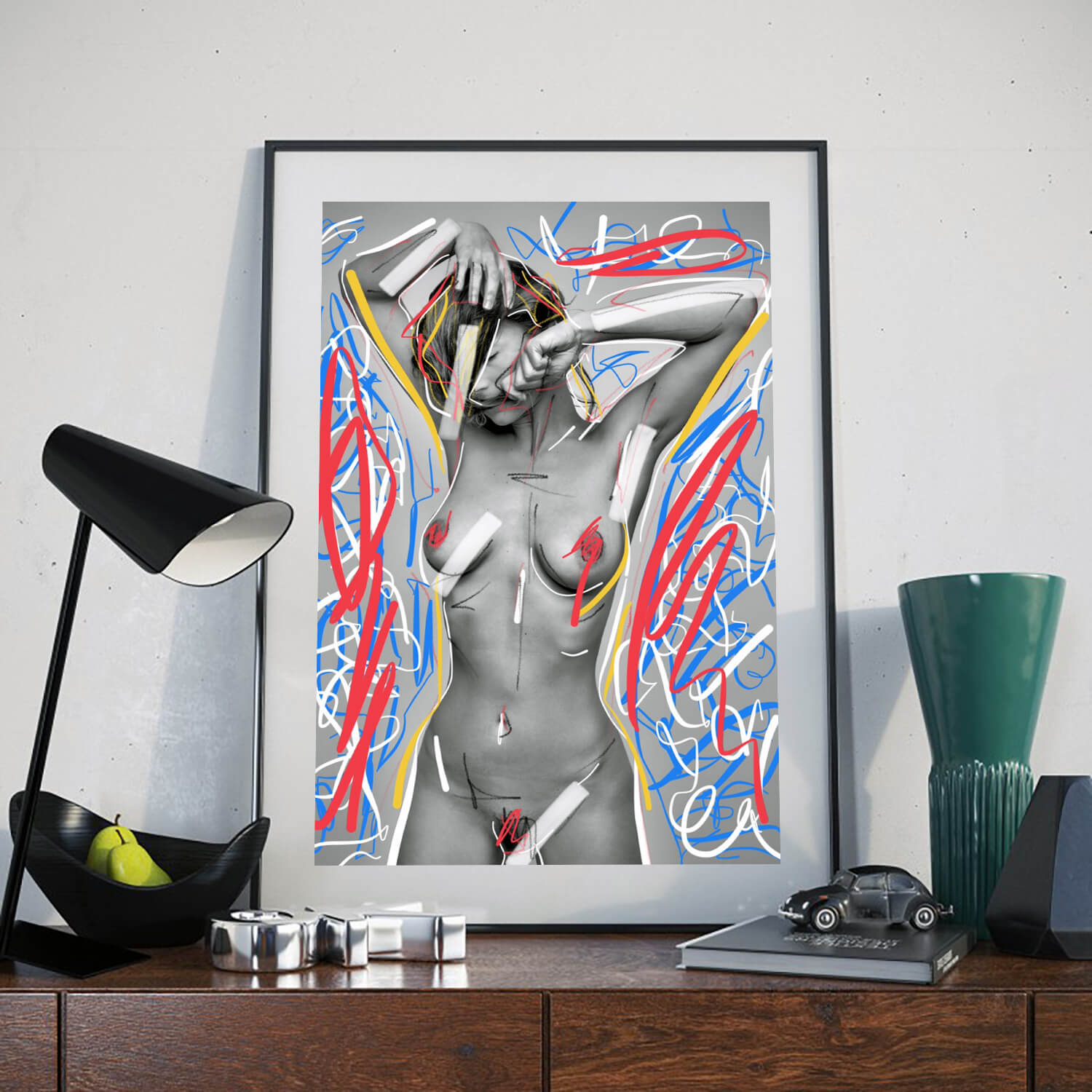
Embarking on the endeavor of composing a letter, aiming to unravel the profound layers of our inner selves. Lettere stands as a collection of four repurposed digital images, representing an ongoing exploration of the anima. This journey is intricately tied to the challenge faced by men in understanding and connecting with the evolving feminine aspect within themselves—a challenge that inevitably surfaces at various junctures in their life’s journey. This exploration involves a deliberate exercise in active imagination, challenging and transcending the conventional notion of the male gaze as an ego-driven act of objectification.
In Lettere, the creative process becomes a profound reflection on the intricate dance between the masculine and feminine within, offering an alternative narrative that goes against the standard grain of the male gaze. Instead of perpetuating an abusing ego, these reimagined images foster a more empathetic and nuanced connection with the feminine, shedding light on its multifaceted nature. The photographic canvas undergoes a metamorphosis, transforming the ordinary into captivating visual narratives that mirror the complexities of the inner self.
In essence, Lettere becomes a testament to the transformative power of artistic expression, challenging preconceptions and fostering a rich tapestry of visual storytelling that celebrates the harmonious interplay of diverse aspects within the human psyche.

The La Metro series unfolds with three found photographs that have undergone reinterpretation, inspired by the dynamic interplay of graphical spatial movement. This concept seamlessly evolves into a dynamic form of action painting, characterised by a spontaneous and improvisational process.
Within this creative journey, there exists a nuanced interplay between the painted elements and the central figures within the found photographs, considering aspects such as colour, stroke thickness, and overall colour contrasts. The outcome is a harmonious convergence, giving rise to a balanced and captivating sense of movement.
In the exploration of this artistic odyssey, a fusion of intuition and deliberate choices results in an intricate dance of visual elements that captivates the observer. This narrative transcends the confines of the conventional male gaze, introducing the concept of a “new diva” that celebrates a profound understanding of the feminine spirit.
Two of the images boldly portray a nude figure, capturing the essence of vulnerability and authenticity. This choice is intentional, presenting a raw and unfiltered representation that allows the viewer to connect with the unadorned beauty of the human form. In contrast, the third image features a woman adorned in a black top against a sun-bright yellow background. This deliberate juxtaposition creates a powerful visual contrast, symbolising the interplay between light and shadow, strength and vulnerability.
The La Metro series strategically emphasises the empowerment and celebration of the feminine spirit, crafting a narrative that transcends traditional aesthetics to embrace a fresh and captivating perspective. The carefully selected wardrobe and background choices serve as deliberate expressions of the multifaceted nature of the “new diva” concept, highlighting both resilience and grace within the visual narrative.

In this vector artwork, an anonymous woman is depicted wearing a bathrobe, creating a captivating scene that conveys a sense of personal relaxation and intimacy. The bathrobe symbolizes comfort and hints at a private environment where the subject can truly unwind and embrace her solitude.
The artwork notably draws attention to the woman’s cleavage in a discreet and captivating manner, effectively emphasizing her femininity and allure. This particular element adds a subtle hint of sensuality and confidence, thereby imbuing the composition with an enchanting charm.
In her left hand, the woman holds or pulls a red string, which carries profound symbolism. The red string references the concept of the Red String of Fate, originating from Chinese folklore. According to this belief, individuals destined to meet are connected by an invisible red string, transcending time, place, and circumstances. By incorporating this symbol, the artwork delves into the notion of fate and explores the profound connections that can emerge between people.
Another intriguing detail in the artwork is the presence of a black hairband encircling the woman’s left hand. This subtle yet captivating addition suggests that the subject is in the process of tying her hair, adding an extra layer of sensuality to the scene. The inclusion of the hairband hints at an imminent transformation or preparation for a more intimate moment.
The juxtaposition between the woman’s hand holding the red string and the presence of the hairband creates a captivating dynamic. It symbolizes a duality between the connection represented by the Red String of Fate and the personal act of tending to one’s appearance.
Crafted using vector art techniques, the artwork employs precise mathematical equations and points to achieve clean lines, sharp edges, and a visually striking composition. Vibrant colors are utilized to enhance the overall impact, lending depth and dimension to the artwork.
This work was the very end of the Kobba creative phase but was left out of the final curated set. In line with the concept behind Kobba, it raises questions about permanence, stability and the profound possibilities that lie within the connections we forge with ourselves and others.
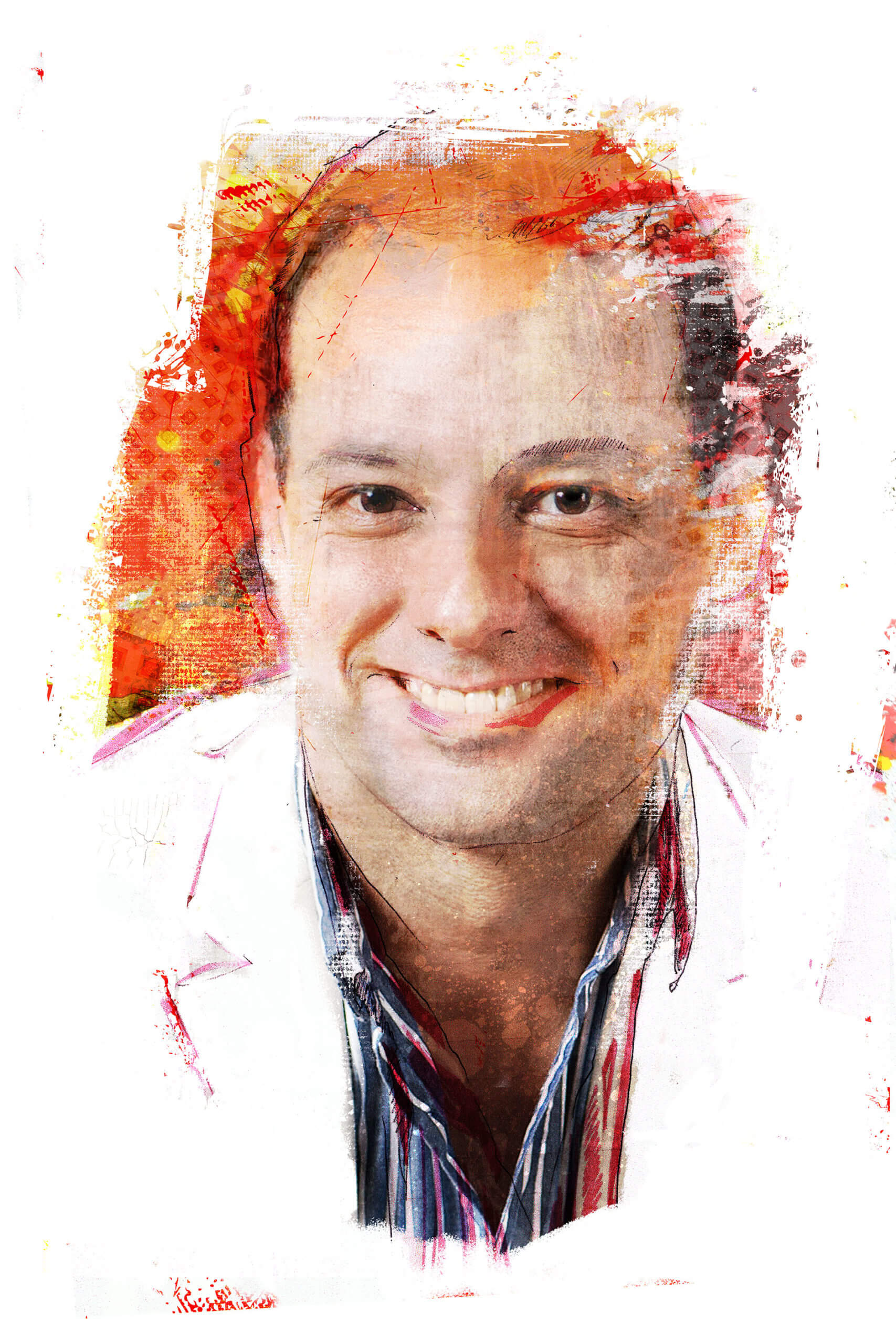
Portrait of Jason is a commissioned portrait of Jason Micallef of Mosta, chairman of the Valletta 2018 Foundation. The artwork was commissioned as a collective Christmas gift by a number of employees at the Foundation in 2017.
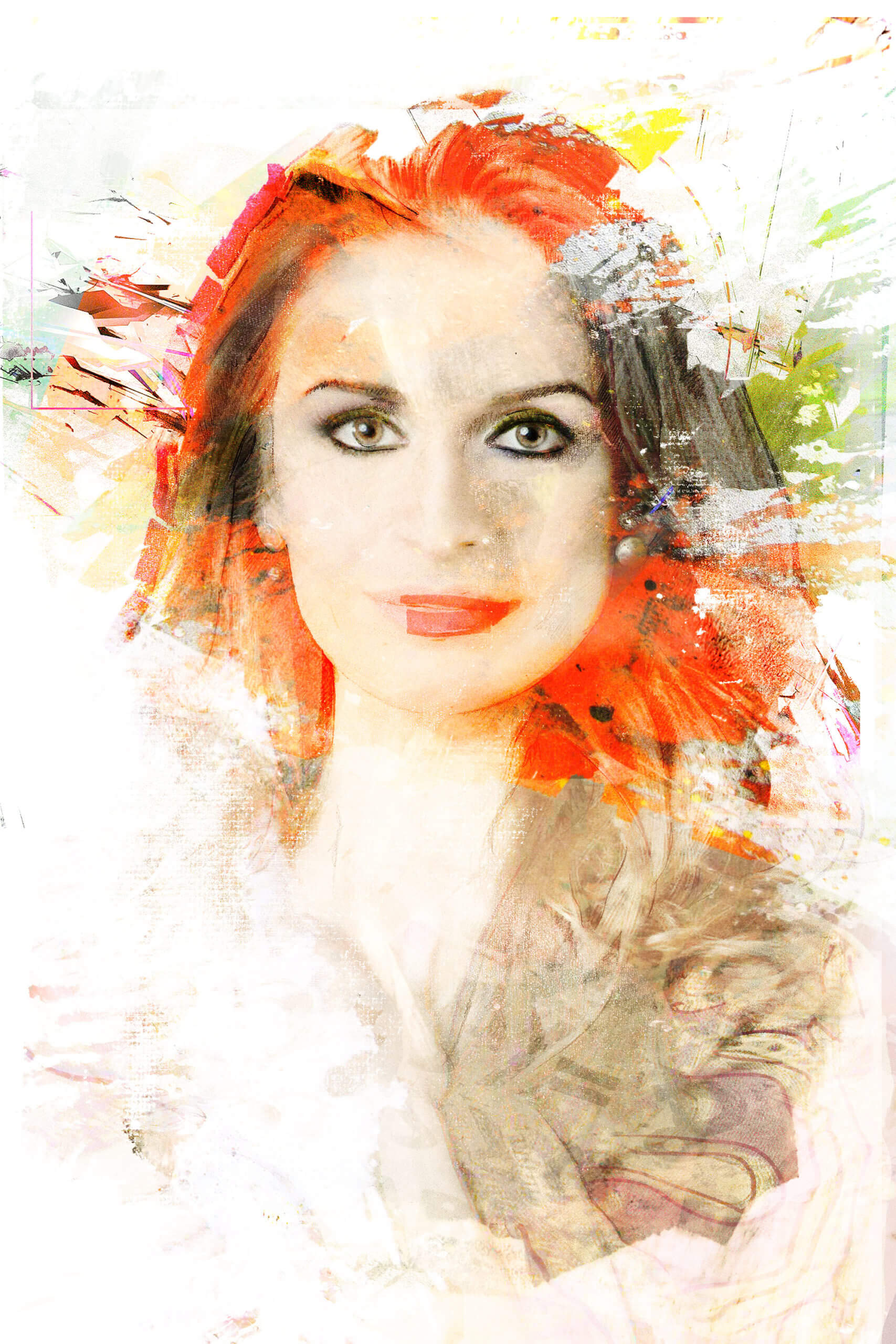
Portrait of Catherine is a commissioned portrait of Catherine Tabone of Zejtun, executive director of the Valletta 2018 Foundation. The artwork was commissioned as a collective Christmas gift by a number of employees at the Foundation in 2017.
The work involved working through digital collage, brush work and editing as shown in an experimental portrait that was documented in the process.
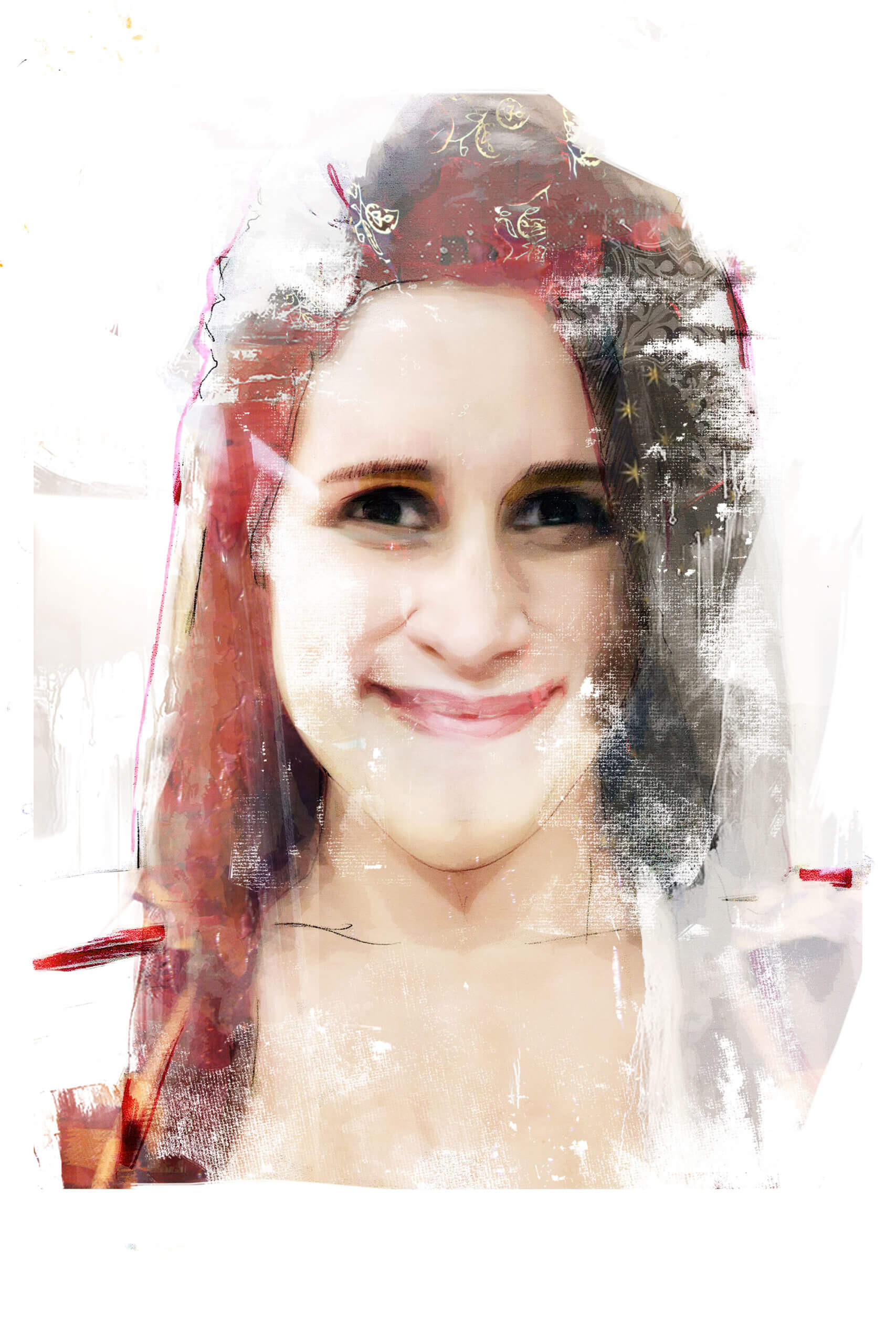
A portrait of Giuliana (2017)






